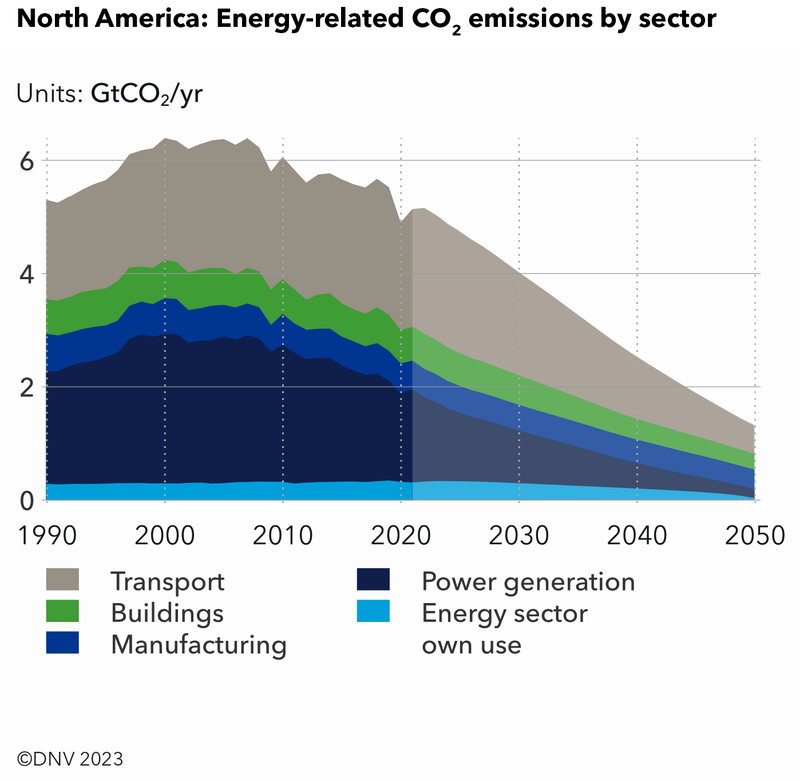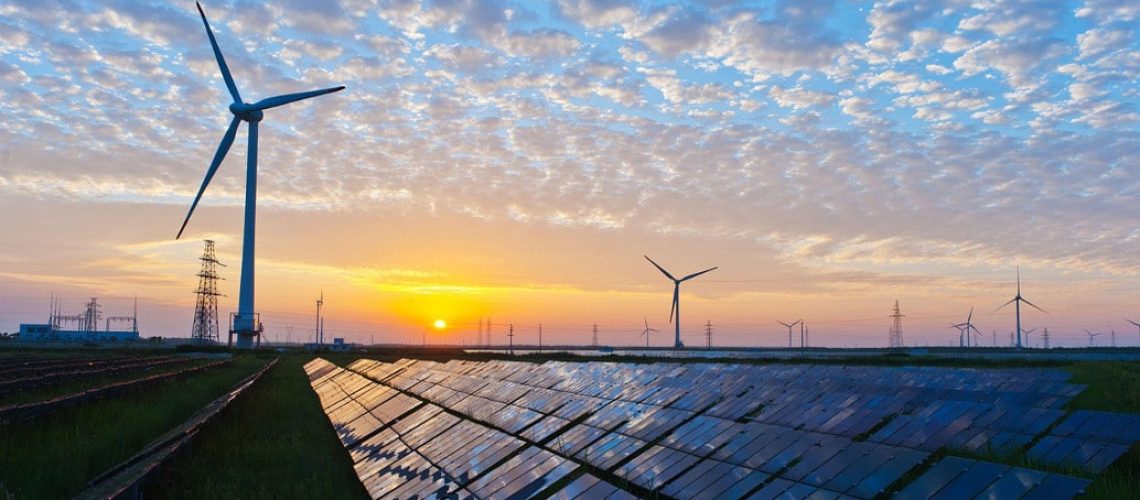The intrinsic efficiency of renewables will lower the overall cost of energy from 4% of GDP today to about 2.5% by 2050, said a report from DNV.
The global energy paradigm shift is underway, and by mid-century, renewable energy is expected to be the dominant source of electricity in many major developed countries worldwide.
For the United States and Canada, that paradigm shift comes with a $12 trillion price tag by 2050. And while that sounds like a lot, when compared with the inefficiencies of today’s fossil fuel-based economy, the savings are considerable.
A report from global risk assurance company DNV said that the intrinsic efficiencies brought on by renewable energy will lower the overall cost of energy from 4% today to about 2.5% in 2050 for the United States and Canada.
Capital expenditures for renewables will finally overtake fossil fuel by 2040, said DNV. By then, the firm expects domestic demand for fossil fuels to fall by about 60% by midcentury. Electrification of transportation and the power sector will drive down demand, said DNV, but the firm expects fossil fuel exports to remain relatively stable through 2050.
DNV said consumers burdened with high electricity bills should see significant relief by 2050, with household energy expenditure potentially being cut in half through energy efficiency and a cleaner, more stable energy mix.

Along this path toward more affordable renewable energy, DNV said the U.S. and Canada will need to increase its cumulative renewable energy capacity by 250% by 2050.
DNV warns that bottlenecks in transmission lines are still a major barrier to building more solar and wind projects in North America, but it noted that transmission and distribution system operators will likely be driven by unprecedented opportunity to capitalize on the vast market for renewable power.
“The cost efficiencies of renewable power are proving irresistible even in the land of big oil,” said Remi Eriksen, group president and chief executive officer at DNV. “The $12 trillion to be spent on renewables and grid infrastructure in the U.S. and Canada should be viewed as an opportunity to put the region at the heart of technologies essential to the global energy transition, such as hydrogen e-fuels, whilst reducing energy bills for households.”
There is still much progress to be made to achieve this renewable energy future. Currently, fossil fuels account for about 80% of the energy supply in the U.S. and Canada. This will drop below 50% in 2050, said DNV. Coal production is expected to decline 85% by midcentury due to its inability to cost-compete, and oil consumption is expected to decline 75% as North America electrifies its vehicles.
DNV said that natural gas consumption has already reached its peak in North America as well and may be halved by midcentury. However, DNV expects both natural gas and oil exports to remain stable through 2050, a boon to the North American economy, but a bane to global efforts to decarbonize.

“Although the policies enacted in North America are accelerating the energy transition, the U.S. and Canada will not reach net zero CO2 emissions by 2050,” said DNV. “CO2 emissions are forecast to drop 75% by 2050 as fossil fuels, especially natural gas, will still play a role in the energy mix and the emissions of hard-to-electrify industrial processes like cement production will remain significant.”
DNV said that to remain in accord with the Paris Agreement, North America would have to become net-zero by the early 2040s, a target that is currently unlikely to be hit at current levels of clean energy deployment.
“This would require the type of American focus that ushered in the atomic age and the space age,” said DNV.



